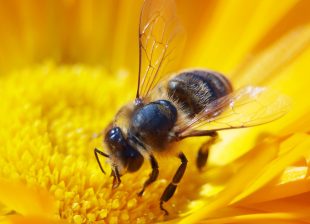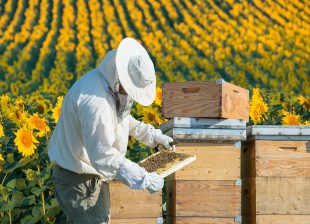
We talk about the benefits of genetic diversity. We try to avoid inbreeding. Bee breeders import semen to enhance the gene pool. Yet, when a beekeeper has a colony that acts differently from his others, panic sets in. Oh dear. One colony eats more, stays out later, is not as big, eats less, stores no pollen, stores too much pollen, is nastier, smarter, or gentler than the rest. What should you do?
The irony, of course, is that you can’t have it both ways. If you achieve genetic diversity in your apiary, your colonies are not the same. That’s the whole point. Remember, diversity and sameness are polar opposites.
Recognizing normal when colonies are not the same
When someone is in a twist because one colony is different from another, they nearly always decide that the bigger, gentler colonies are the normal ones and the others are somehow off. But that conclusion is merely a reflection of our own desires. I never hear anyone claim that the smaller or feistier colony is the normal one, but how do they know? It’s odd when you think about it.
We don’t apply this same standard to our children. We accept difference as good. Perhaps one child is good at sports and one is good at math. Or one is tall and one is short. We accept both.
I know, I know. I’m anthropomorphizing and some people hate that. But seriously, why do we think every colony should be a carbon copy of every other?
Genetically identical populations never do well. In fact, as a gene pool shrinks—regardless of the species—individuals become more and more alike. And while that population may have strengths, it also has weaknesses. When a population becomes too homogeneous, extinction is usually not far behind. Sameness means there are few variations to fall back on when something goes awry.

Colony difference can be good
Just yesterday I received an email from a beekeeper with four colonies. She said they were all doing great, packing in lots of honey and pollen, and all had low mite counts. But one wasn’t as big as the other three and she was obsessing over it. She was feeding it more, giving it extra frames of brood, and offering pollen supplements, but she couldn’t make it bigger.
But think. Why does it have to be the same size? If it is healthy, thriving, and doing the things bee colonies ought to do, what difference does it make? Many times those smaller colonies do better over a long winter than the gigantic ones that have many more mouths to feed.
Understand that I when I say “different,” I don’t mean failing. I don’t mean sick. I’m referring to colonies that are healthy but—for whatever reason—are just not the same as the others. Most of us don’t have crystal balls that can predict which colonies will overwinter and which will not. Assuming they are all healthy as we dive into winter, it is impossible to know which will thrive and which will fail.
Size is not the same as resilience
I can’t tell you how many times I’ve decided that certain smaller colonies wouldn’t make it, while I assumed the larger, more active colonies would. I also can’t tell you how many times I’ve been wrong. So now I’m happy when I have a mix. With a diversity of genetics, a variety of strengths and weaknesses, I have the best chance of having plenty of bees when springtime rolls around.
Oftentimes, all the colonies make it, but sometimes a few don’t. Knowing which is which is not nearly as clear as you might think and may come as a complete surprise. So relax and be grateful that not all your colonies are alike.



